
Me 509
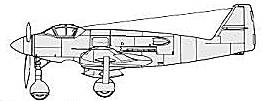
Although the Me
509 can trace its roots back to the Me 309, very little information has
survived. The aircraft was to be of an all-metal construction. A new
fuselage was designed, with the pressurized cockpit being moved well
forward near the nose. The Daimler Benz 605B 12-cylinder
engine
was buried in the fuselage behind the cockpit, and drove a
three-bladed, Me P 6 reversible-pitch propeller by an extension shaft
which passed beneath the cockpit (similar to the US Bell
P-39).
The wing was tapered and had rounded wingtips, and was mounted low on
the fuselage. Other Me 309 components were to be used, such
as
the tricycle landing gear, and the vertical tail assembly was similar
to the one used for the Me 309 V1. Armament was not decided
upon
for the 509, but it is thought that two MG 131 13mm machine guns and
two MG 151 20mm cannon were to be used. Although there were advantages
of better cockpit visibility and relocation of the engine weight from
the nose gear (important, since the Me 309's nose gear often
collapsed), the Me 509 design and development was stopped when the Me
309 program was ended in mid-1943.
The Kit
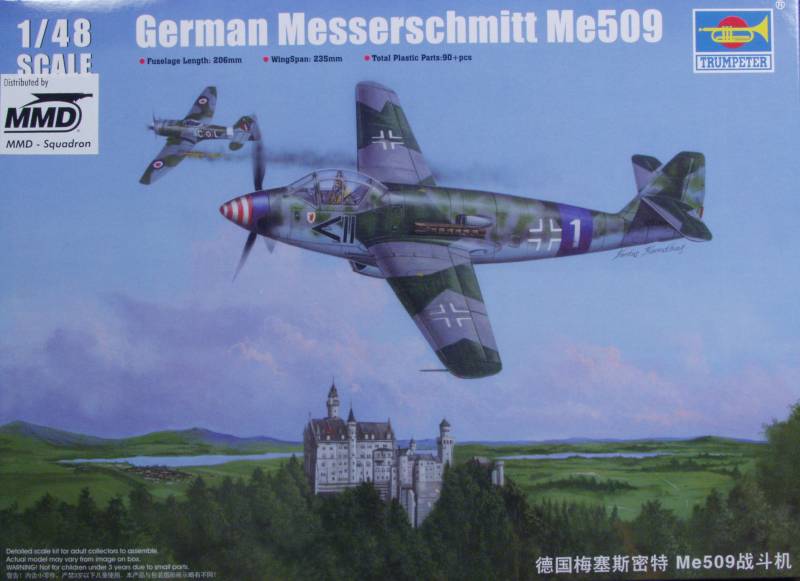
The Trumpeter kit comes in a relatively small tray type top open box with fanciful artwork on the top. The top is thin cardboard and the bottom is corrugated cardboard. Inside one finds three sprues molded in light gray each of which is enclosed in a resealable plastic bag. The clear parts are bagged separately and were wrapped with foam. The PE was in a separate bag as were the decals. Trumpeter gets good marks for packaging on this kit ! The parts are nicely molded with almost no flash and fine recessed panel lines and rivet detail. Many of the sprue attachment points are located on the mating surfaces where there is lower risk of damaging a surface that will show when removing and cleaning up the parts. I found no sink marks or other deformities of any consequence on the airframe parts. The surface is smooth and has a matte finish. The control surfaces are all molded in the neutral position and they are smooth leading one to believe they were metal covered. I did not find any ejector pin marks that would show. The interior consists of a cockpit tub with side panels, bulkheads, pilots seat, stick, and rudder pedals and seat belts and harness which are supplied in PE form. Not a lot of detail but adequate for an aircraft that was never produced. Those so inclined could add all sorts of creative gizmology. The wheel wells are boxed in using no less than seven parts per well and the upper wing has structural detail molded in. The plastic in this area is thin enough you can see light through it. There is no engine supplied, just an air intake and exhaust stacks. The wheels are not weighted. Below are the sprue photos.
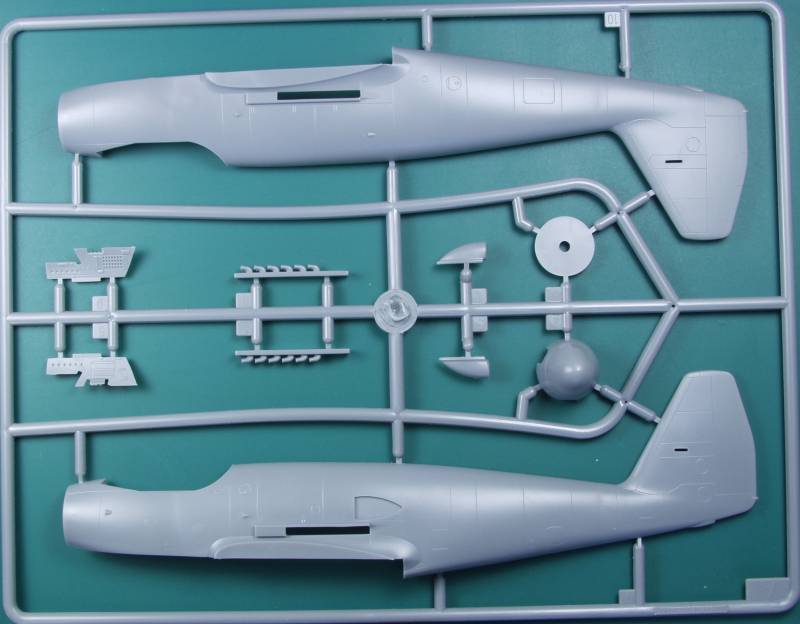
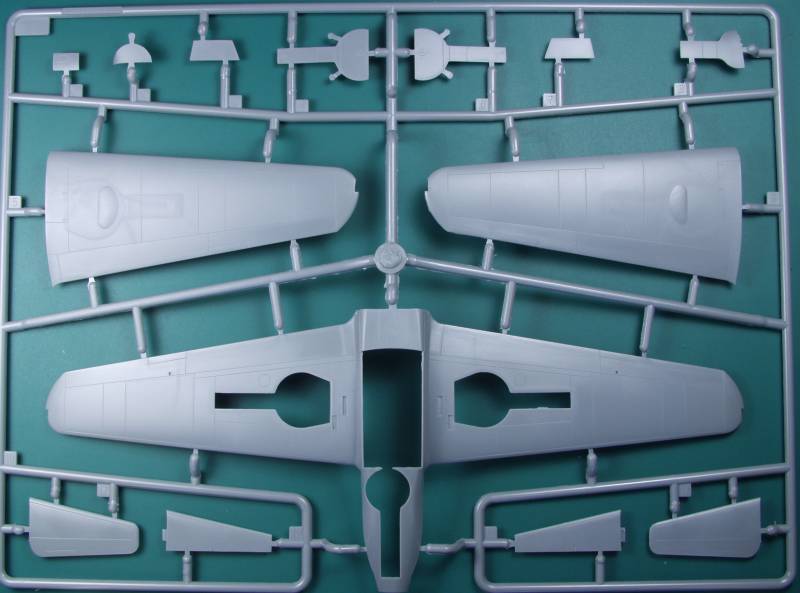
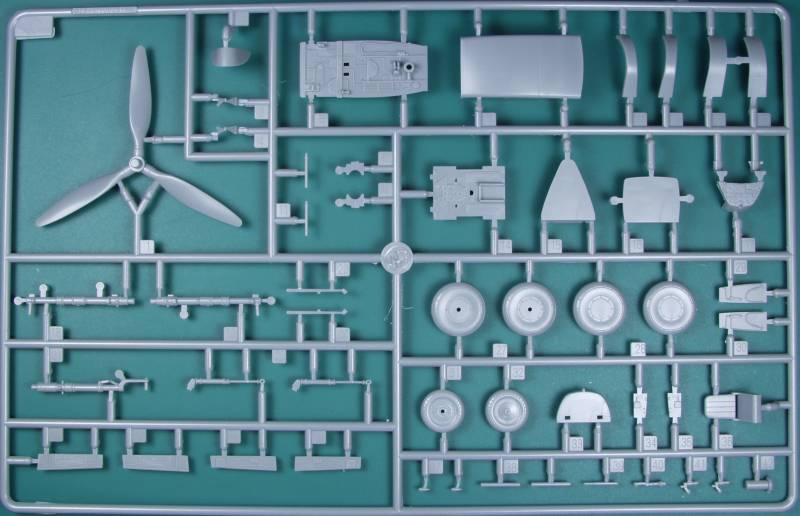
The photo etch parts provided include rudder pedals, seat belt and harness and intake and exhaust grids for the under fuselage radiator.
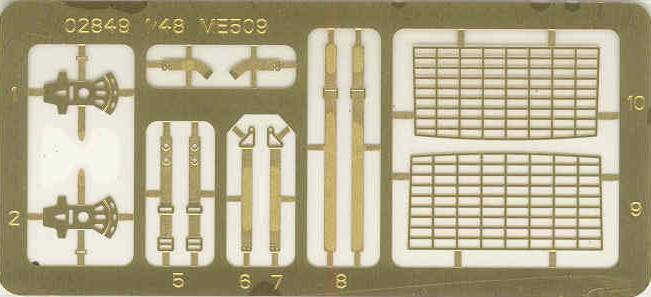
The clear parts are nice and clear with the main canopy a tad thick while the windscreen is much thinner. Frame lines are recessed but should be easy to mask, the other parts included are wing tip lights and two parts that make up the gun sight.
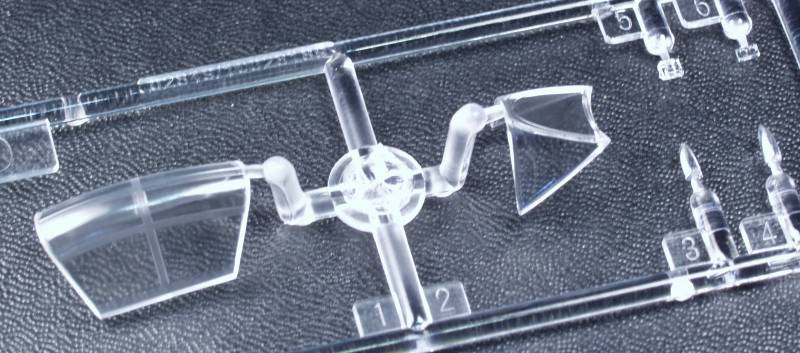
The decals which of course are fanciful and provide markings for two aircraft in different paint schemes. Some stenciling is included as well as a spinner spiral, walkway markings and an instrument panel. They look thin and are glossy and the registration was a bit off on things that had a border around them. There is also a fair amount of excess film on them. I have had fairly good luck with Trumpeter decals in the past so hopefully these will work well too.
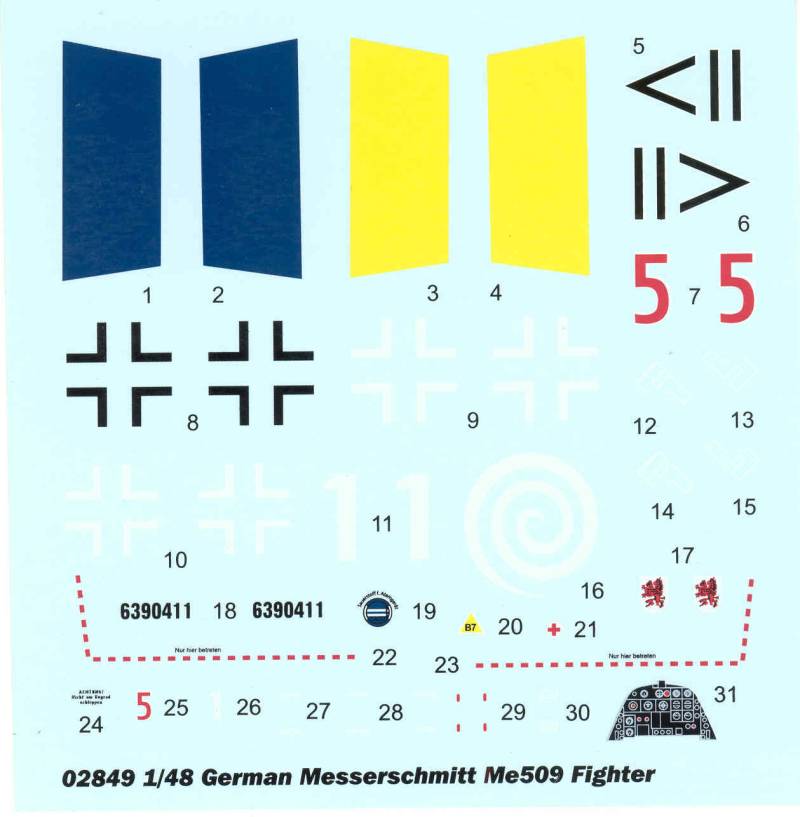
The instructions are an A4 size in the landscape direction, eight pages and stapled. First page has the usual safety warnings, icon chart and decal instructions in English and Chinese, page two is a parts map and the balance are assembly diagrams in six steps. A separate sheet A4 size printed in color on glossy paper has the painting and decal instructions. A color chart calls out all the colors in Mr. Hobby numbers with references to many but not all of them in Vallejo, Model Master, Tamiya and Humbrol numbers.
After Market Goodies
The only thing I could find was a replacement set of landing gear from Scale Aircraft Conversions, their number 48166.
Conclusions
This is basically a Luft 46 kit and it's nice for once to have one with state of the art long run tooling instead of the usual short run products. By all accounts it is reasonably easy to build with only a few fit issues and should be build able by most modelers with at least some limited experience. The kit will need some weight in the frontal area to keep it from being a tail sitter, no mention is made in the instructions as to how much might be required so keep this in mind when building. I hope at some point in the future Trumpeter will produce some additional Luft 46 aircraft to go with it.
Links to kit build or reviews
A nice review / build can be found here.
References